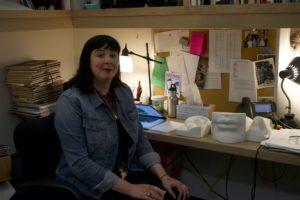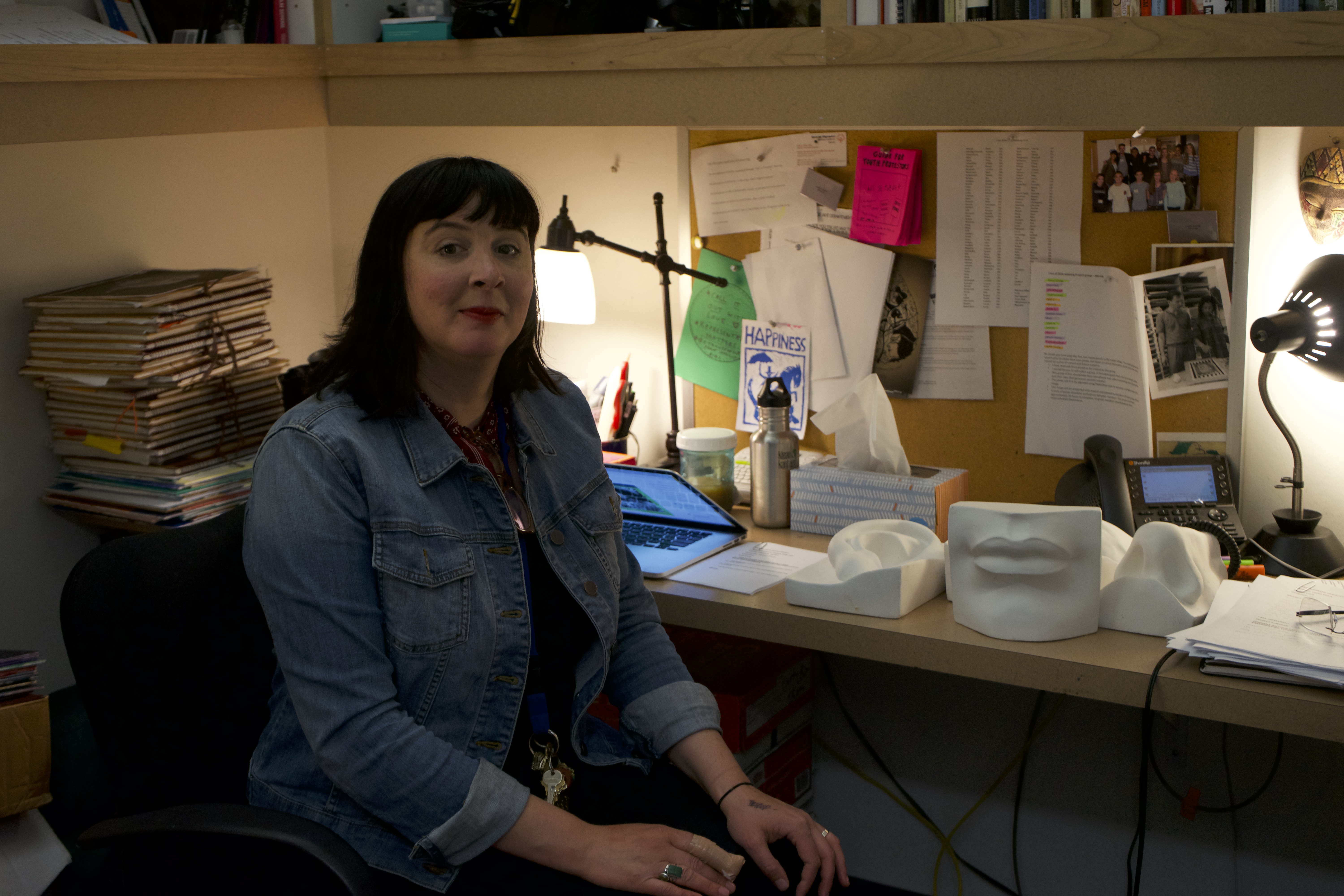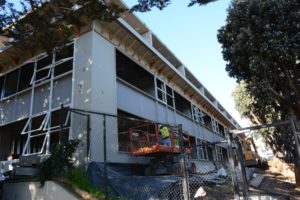
photo by Nick Harris
Visual arts teacher, artist and film-aficionado Lydia Greer is leaving Lick to work on her own artistic projects. At Lick, Greer taught Cinematic Storytelling, beginner and advanced Film, and Contemporary Media and Art. To showcase the range of Lick student’s stunning films, Greer founded the Lick-Filmerding Film Festival, an the annual celebration of LWHS student films. Greer is passionate about art of all forms — painting, drawing, photo, and revolutionized the study of film and filmmaking at Lick. A talented artist and engaging teacher, Ms. Greer has made a lasting impact on the art department and her students.
Regan Fenrick: What inspired you to pursue a career in art?
Lydia Greer: My father is a painter who exposed me to art when I was very very young. We would take the train from Washington Heights all the way down to around Central Park in New York City and go to the MET, the Metropolitan Museum of Art, which was free back then. As a child I was so curious and I was so excited by the art my father showed me. I asked, how can I be a part of this world? When I found out that you could be an artist, I decided to pursue that life. I also love things like journalism and filmmaking and documentary, and now those practices are all integrated into my work.
I studied art at Pacific Northwest College of Art, Portland State University (Drawing, Painting and Printmaking), Skowhegan School of Art (Animation and Film/Video) and did my MFA at UC Berkeley in Art Practice. I feel being a trained artist has helped me work in all the mediums I work in.
I think there’s such a sense of possibility in the arts. Art inspires curiosity, risk-taking, invention. There’s all these new art forms emerging and there’s the traditional forms — the possibility of both old and new. Constant experimentation. It’s absolutely thrilling.
RF: How did you come up with the idea of Lickfest films?
LG: I started the Lick Filmerding Film Festival my first year. Film students needed an audience. If you don’t have an audience for your work it just sort of floats off into the ether — your work just lives on a hard drive of a computer. Especially with film, you have to have an audience; you have to experience audience reaction — you don’t want to work in a vacuum.
When I came, I recognized that Lick had a beautiful theater and I saw the space as an opportunity. I had this fabulous student named Jasmine Leong ‘10 who was super passionate about film. She came up with the name “Filmerding” as a joke. Everybody just started laughing. The name had a ring to it, and it just stuck.
The Fest is a means of publishing and presenting. It’s a community tradition that lets students’ voices be heard. I hope the Filmerding tradition lives on. I think the Fest is a opportunity for young people, before they get out in the world, to experience taking responsibility for and ownership of their work.
Through the film program and film festival, I want to showcase my students. Sometimes it’s the students who aren’t as extroverted or loud as their peers — and these quiet students might be creating the most beautiful art. The community may not know the magical things that they’re creating because maybe they’re a little quieter.
RF: What has been your favorite part of working at Lick?
LG: My favorite part of my work at Lick is the people, and their passion for learning. I mean there are some gems of students here at Lick. Some students aren’t even in my film class anymore and they’re sitting in the studio working on films. They email me with questions and they come and sit-in on classes and have conferences with me about their work. The passion of the students here is incredible. It’s very energizing.
RF: What is your favorite part about teaching?
LG: What I love about teaching CMA is different than what I love about teaching advanced film classes. What I see in CMA is the spark and excitement when a student, who’s first being exposed to art, gets it. I love watching students in CMA kind of light up. I met my best friend in ninth grade art class, on the first day. I can imagine there’s a lot of friendships that are made through art classes. You never know what connections you will discover.
With advanced students, I love watching them hone their style and watching them embrace habits of mind — going deep with inquiry and reflection and being able to process feedback and integrate it into their work. Processing feedback is really important to learn as a young person.
RF: What are your plans after you leave your job at Lick-Wilmerding?
LG: I’m going to be working in my art studio and I have film and documentary projects. I have an art studio that I share with two other people, two other female artists, actually, in Alameda, California. It’s near Park Street. People can come visit! I’m going to continue working there on projects. I’m building a sculpture that’s like ten feet by ten feet, with multiple projections and moving sound elements. The sculpture is made of handmade and hand painted paper. It’s a truly multimedia, mixed media, kind of project.
I have a show in June with a small opera company that I started. It’s a multimedia puppet opera company called the Facing Shadow Opera. I have a documentary I’m working on that needs more attention. I also have a book I’m working on and a lot of bodies of artwork in general. I’m also going to be doing some freelance work with video and film and editing. For a decade, I have worked with an incredible theatre company called ShadowLight Productions. They are one of the reasons I moved to the Bay Area. I’m also going to be working with them doing video and creative consulting work. I’m also very passionate about bringing women into the film industry behind the lens and hope to do some work around that as well. I hope to continue to weave education into my life’s work.
RF: In terms of your own work, are there any goals or themes that you tend to focus on?
LG: The messages I portray are usually quite complex and have a whole story world. I like to work with taboo stories. I like the audience to be engaged in the narrative construction; I like there to be a playful interaction between the audience and the art piece. A creative project I’ve been working on recently is called Hallucinations. It’s an ongoing project involving live opera, animation and projection. The piece is about Mirabai, a woman born in 1498 in Kudki, Rajasthan, India – and a sixteenth century Hindu mystic poet. When Mirabai’s husband died, she refused to join him on the funeral pyre. Instead she escaped to hide in the mountains and found freedom with Krishna — a hindu god. When she descended from the mountain she performed her story in the streets, calling Krishna the “Dark One” singing and dancing her story of rebellion and survival. We’ve performed at the Exploratorium Museum, Artists Television Access, Berkeley Public Library and the San Francisco Public Library for Radar Productions. We’re going to perform it at Kala Art Institute on June 9, 2018 with live puppetry, projected animation, found film and live opera. I love working with transcendent and rebellious figures, really understanding their stories and the ways in which they impact and change society.
I want to say thank you to the Lick-Wilmerding Community and Visual Arts Department for wonderful years of working with the incredible colleagues and students. Let’s stay in touch! www.lydiagreer.com







